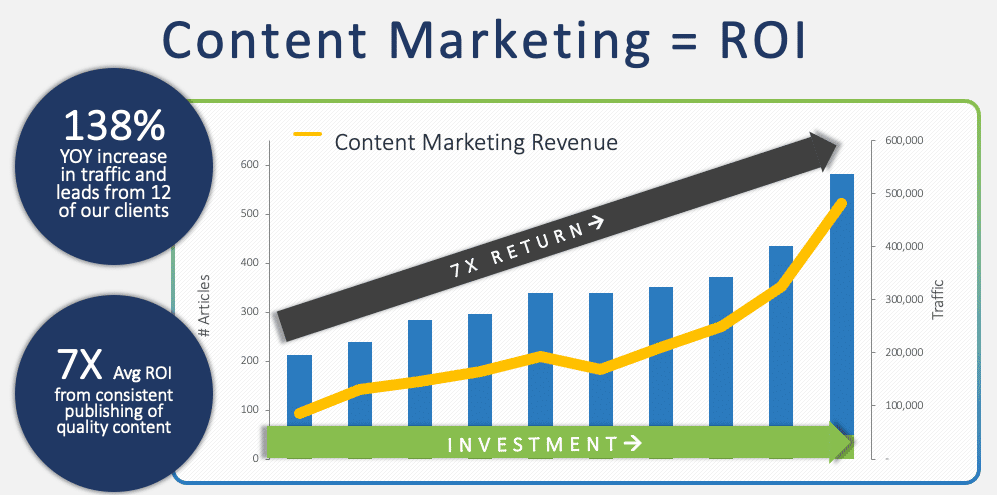
Crafting a digital content strategy is paramount to achieving significant success metrics, including boosting organic web traffic, enhancing brand recognition, and driving lead generation. When formulating your strategy, there are various factors to consider for optimal results.
Essential Components for Success
- Prioritize the audience in every digital content plan.
- Clearly define goals and measurable KPIs to track progress effectively.
- Implement an "always on" content strategy, complementing an annual content plan.
- Measure, test, and optimize content to enhance marketing ROI.
Steps to Kickstart Your Digital Content Strategy
Understanding Your Audience
The primary question to address when developing a digital content strategy is identifying the target audience. Avoid creating content solely for executives. Effective content marketing focuses on providing valuable, industry-specific information that engages the audience rather than overtly selling products or services.
To accurately define your audience, invest time in comprehensive research. Utilize customer personas and demographic data from web analytics to gain insights into different audience segments. Tailor your content strategy to address audience needs and resonate with them effectively.
Setting Measurable Goals
Once you have a clear audience understanding, establish specific goals for your content marketing strategy. Determine if the aim is to enhance brand awareness, generate leads, or improve search engine rankings. Define key performance indicators (KPIs) to track and evaluate goal achievement accurately.
Setting quantifiable numerical targets enables your team to assess goal attainment objectively. Align content creation with defined marketing objectives for optimal outcomes.
Conducting a Content Audit
Before creating new content, conduct a comprehensive content audit to evaluate existing assets. Identify top-performing content to build upon and eliminate outdated or underperforming material. Define audit objectives, such as content organization, SEO optimization, and brand messaging consistency.

Specify the content channels to audit, whether website, social media, or other platforms. Develop evaluation criteria to assess and rate audited content effectively.
Diversifying Content Formats
While blogs are integral to content marketing, diversifying content formats enhances audience engagement and boosts traffic. Incorporate videos, infographics, images, and interactive content to supplement text-based material effectively. Utilize various content types to expand brand reach and authority.
Prioritizing SEO Strategies
SEO plays a crucial role in enhancing brand visibility and driving organic web traffic. Stay updated on evolving search engine algorithms and focus on quality content creation. Avoid keyword stuffing and prioritize content relevance and quality to improve search engine rankings organically.
Generating Fresh Content Ideas
Stay creative and innovative when brainstorming content ideas. Utilize keyword research tools and stay informed about industry trends to develop compelling content. Analyze competitor strategies and adopt proven content marketing techniques to enhance brand authority.
Encourage team and customer input to diversify content ideas and maintain an ongoing ideation process for sustained content relevance.
Establishing a Consistent Publishing Schedule
Maintain content consistency and organization by developing and adhering to a publishing schedule. Utilize content calendars to track content creation, identify gaps, and optimize content planning. Implement tools like online content calendars or personalized templates for efficient schedule management.

Implementing a Multichannel Strategy
Enhance brand visibility and audience reach by implementing a multichannel digital content strategy. Share content across diverse platforms and encourage audience engagement through shareable content formats. Leverage social media, email newsletters, and other channels to amplify content reach and engagement.
Prioritize content types that resonate with audiences, such as statistics, infographics, listicles, and how-to guides, to maximize content sharing and visibility.
Frequently Asked Questions
What are the primary types of marketing you use?
Marketing is the act or communication of ideas, values and messages to consumers. Marketing is often used interchangeably with advertising. But in reality, marketing involves more than just advertising. Marketing covers all communications that promote and market products or services.
The three key components of marketing include branding, promotion, and distribution. How a company is identified to its target audience is called branding. Promotion refers to attracting attention for your brand through paid advertising, promotions and other public relations activities. Distribution is the delivery of your message to your target audiences. You can do it through traditional media like radio, television, print, or email. However, new technologies make this easier than ever.
Why is it so important for your brand to be defined?
Your company's promise to customers is a brand. Your brand is a promise that your company will deliver certain benefits and qualities that will make you stand out from the rest. Your brand is what makes you stand out from other companies in your industry.
A brand establishes your authority and credibility. Potential customers instantly recognize your company's logo when they see it. They trust you because you've earned their respect.
Your company's culture is also part of your brand. Your brand will reflect the passion of your employees for your product/service.
Your brand is more that words and photos. It's a promise that you company will keep. It is your promise to offer value to your customers.
When you set out to develop your brand, you need to consider several factors. You want your name to clearly describe what your company does. For example, if you run a bakery, you'd probably pick something like Sweet Dreams Bakery. If you run a software business, however, you would probably choose DreamSpark Software.
Next, you will need to decide how your company will be represented. Are you going to use a familiar symbol? Do you choose colors that are consistent with your corporate style? Will you use logos?
Finally, consider the perception of your brand by your target audience. Are you friendly and helpful? Will you appear professional and trustworthy? Will you seem knowledgeable and experienced?
These are all questions to ask before you build your brand.
What are three examples of internet marketing strategies?
Internet Marketing refers to all online activities that promote products or services. Internet marketing encompasses email marketing, social networking, search engine optimization, pay-per click advertising (PPC), website design, and pay-per view.
It's important to note that these terms do not necessarily mean you'll have to spend money to make money. There are many other ways to earn income that don't require you to spend any money. The better the return on your investment in each method, however, is the greater the potential for income.
Email marketing is the most popular form of internet marketing. This involves sending out emails containing information about your business to potential customers.
Another popular method to advertise is through social media marketing. Facebook, Twitter and LinkedIn are all great platforms for sharing information and interacting with friends and loved ones. These sites are a great way for businesses to increase awareness of their products and services, as well as to establish relationships with their clients.
Search Engine Optimization (SEO) is a technique used to improve the visibility of websites within major search engines. Webmasters can increase traffic to their websites by increasing the quantity and quality of relevant backlinks.
Website design is the art and science of designing websites that are attractive and work well. Website designers design the website's layout. Website designers also make sure the website conforms to technical specifications and meets accessibility standards.
Advertising called Pay Per Click (PPC) allows advertisers to bid on keywords relevant their products and/or services. Advertisers earn a commission when someone clicks their ad. PPC ads are usually found at the top and bottom of search results pages.
Are there risks involved in digital marketing
Digital marketing is not without risks.
First, be careful what you post on social media.
You must ensure that your content does not infringe any intellectual property rights of others.
In addition, you risk losing control of your brand image if you do not monitor your online presence closely.
You could also be vulnerable to identity theft if your personal details are used without your consent.
How to Protect Your Online Reputation:
- Be Careful About What You Say On Social Networks
- Ensure that All Content Is Original, and Doesn't Infringe upon Any Other Intellectual Property Rights
- Monitor Your Brand Image
- Strong passwords are important
- You should not use personal information without permission
- Notify us immediately of any unauthorized activity
- Don't Post Photos Of Yourself Or Others In A Disturbing Way
- Never Give Out Your Social Security Number
- Keep up to date with the most recent news
- Avoid Scams
- Choose A Secure Password
- Always Be On The Lookout for Updates
- Don't Share Too Much Information
- Pay attention when you give out credit card numbers
- Don't send money via E-mail
- Look out for fake websites
- Remember That Bad Reviews Can Hurt Your Business
- Regularly Check Your Credit Reports
- Be vigilant about your privacy settings
- Ask Someone Who Knows You Well Before Sharing Something
Social Media Marketing is an excellent way to market your business online. It's a powerful tool to promote brand awareness as well as generate leads and sales. Here are five ways to use social media marketing to boost your business.
- You can create a Facebook Fan page to allow you to interact with customers directly on Facebook. Upload photos, videos, as well as other files.
- Twitter Promote Your Business – Twitter offers a great way to share information and connect people. Use hashtags to increase visibility.
- Upload Videos to YouTube – It is very popular to upload videos because people enjoy them. If they like what they see they might click to visit your site.
- Host Live Events – Having live events allows you to meet face-to-face with potential clients. They can ask about your products and services.
- React to Customer Reviews – Positive reviews build trust and encourage repeat purchases. React quickly to negative comments.
What are some direct-marketing examples?
Direct Marketing Examples include postcards, brochures, flyers, e-mails, etc.
Direct marketing allows you to reach people wherever they are. It is the best way to reach customers who already prefer your product or services over others.
Know what type of message would be most appealing to your target markets.
Finding out what your customers want is key to delivering it.
Direct marketing is a great way to promote your brand. Direct marketing can be used to promote your business in many ways. You can send out catalogs to potential customers and advertise in local papers.
You could also create a separate mailing list for your customers. With a solid contacts list, you can add new subscribers easily to your list.
Ask your customers if they would like promotional material. Sign up for special offers to receive discounts from some companies.
Statistics
- Meanwhile, a PartnerPath poll found that co-marketed ads help 68% of consumers arrive at a buying decision before even speaking to a salesperson. (influencermarketinghub.com)
- From 2020 to 2022, eMarketer predicts that digital marketing will grow by 36% and take up 54% of marketing budgets! (marketinginsidergroup.com)
- Many experts recommend you share 20% of your promotional content and 80% of other valuable content you find. (marketinginsidergroup.com)
- Today, 81% of brands around the world have affiliate programs. (influencermarketinghub.com)
- 81% of brands employ affiliate marketing, and eCommerce sites are particularly good candidates. (blog.hubspot.com)
External Links
neilpatel.com
moz.com
- SEO Learning Center, Moz
- [Case Studies] How Moz ranked #1 for a high-volume Keyword in 3 Months or Less
hubspot.com
youtube.com
How To
Top 10 Affiliate Marketing Strategy for 2022
Affiliate marketing is one of the most popular online advertising methods marketers use today.
It allows companies promote products without incurring upfront costs. Instead, affiliates receive a commission each time users purchase advertised products.
There are two types of affiliate programs available: cost-per-sale and performance-based. An affiliate is paid after a set number of sales. Affiliates earn a fixed amount regardless of whether they sell anything.
In this article we will be covering the top 10 most effective affiliate marketing strategies for 2022. We will discuss each strategy and show examples of successful campaigns.
#1. 1. Create a brand loyalty program
eCommerce websites are increasingly adopting brand loyalty programs. Customers can earn points each time they visit a website or shop online.
These points can later be redeemed for discounts, rewards, or special offers.
Amazon Prime membership, for instance, offers members access to special deals and perks.
Amazon also has a referral program called Associates. Amazon Associates allows merchants to refer their customers to Amazon. They also receive a portion from the revenue generated by those referrals.
#2. Promoting products using social media
Advertising products is easy on social media platforms such Instagram, Twitter, Pinterest, Instagram and Instagram.
Targeting potential buyers can be done by companies via ad networks. For instance, Facebook allows advertisers to target specific groups of people based on interests and demographics.
You can target customers who live within a specific distance from a store.
Twitter is another platform that allows companies reach targeted audiences quickly. Companies can quickly send tweets to their followers and ask questions.
Instagram is similar to Twitter because it allows brands to interact with consumers. Instagram, however isn't able to allow businesses direct messages.
Instead, followers will see posts automatically in their feeds.
Pinterest is another social media platform that allows businesses connect with customers. These connections can include asking questions or sharing images.
#3. #3. Offer Special Discounts for Influencers
Influencer marketing can be a powerful tool to increase brand awareness. Brands can work with influencers to offer incentives for them to promote their products.
In many cases, this partnership involves giving influencers products to try out or review.
However, these partnerships aren't limited to reviewing products. Brand ambassadors can also be made of influencers.
Brands can use influencers as hosts to give away products, offer opinions, answer queries, or simply display their products.
#4. Create Video Ads
Video ads are increasingly in demand. Video ads have become increasingly popular since the advent of smartphones and tablets.
Advertisers can use video ads to capture attention and persuade viewers to click on links or buy products.
YouTube is one of the most significant websites where advertisers can place video ads. Advertisers can upload short clips up to 60 seconds on YouTube.
Google AdWords, another option, allows you to place video ads. Google uses keywords to match ads to relevant searches.
#5. Run Mobile Campaigns
Mobile apps are becoming more popular. Mobile apps allow users to download and play games, listen to music, read books, or watch movies.
People spend hours playing games, reading books, listening to music, and watching movies on their phones.
Mobile apps can be used by businesses to increase traffic to their sites.
Apps are available for download on smart devices like iPhones, iPads and Android phones as well as tablets.
App stores can be found for Apple iOS, Google Play Windows Phones, Blackberry OS, Kindle Fire, and Windows Phones.
#6. Integrate Shopping Carts into Websites
A shopping cart is an efficient way to sell physical products.
Customers can add items directly to their shopping cart.
Online shopping carts are growing in popularity. Online retailers such as eBay offer customers the ability to create an account and browse product listings.
Amazon and other online retailers integrate shopping carts into their websites. Customers can pick the items that they wish to purchase and order them immediately.
#7. #7.
It is a great way of attracting new customers.
Companies often send out press releases when they launch a new line.
The release may contain information about the new line's features, pricing, availability, and more.
Once the launch is complete, the company will be able to continue marketing its new products.
#8. Develop Cross-Channel Marketing Programs
Cross-channel advertising refers to marketing efforts in multiple channels.
Cross-channel advertising could be used to send emails to customers via email lists, promote products on social networking sites, or run banner advertisements on search engines.
Some companies combine multiple channels to increase exposure.
Some companies also sell products in brick and mortar stores. They also sell products online.
Companies sometimes use both channels simultaneously in order to increase sales.
#9. #9.
Companies can use data analytics to enhance their business operations and maximize their profits. This involves analysing data from different sources to identify patterns and trends.
Analytics can be used to identify problems and evaluate current practices. It can also predict future requirements and suggest ways to improve.
Analytics tools are able to gather data from many sources, such as web servers and databases.
These tools can help companies learn about their customers, and to better understand their behavior.
#10. #10.
Every business needs to be satisfied with their customers. Customers who are satisfied will be more inclined to return for additional services.
Customers who are satisfied with your products are more likely than others to recommend them to others.
Satisfied customers will also be less likely complain about poor services.
For all businesses, customer satisfaction is a key goal.
By providing exceptional customer support, you can achieve this.
Employees should be able to respond quickly and effectively to customer queries.
Offer fast shipping options, so customers don't have to wait too long before receiving their orders.
It is important that your website is simple to navigate.
Your site should load quickly.
Bear in mind, not all customers can be treated equally
Some customers might need more assistance while others aren't so much.
Therefore, you should tailor your customer support policies to suit individual needs.
This ensures everyone receives top-notch service.
You can find our guide here to learn how you can start an affiliate marketing program.
This article will cover everything you need to know when starting an affiliate marketing program.
Once you have mastered the basics of affiliate marketing, you can build relationships with other bloggers or publishers.
This will give you experience and credibility.
This knowledge can be used to your advantage to make money.
————————————————————————————————————————————–
By: 6462
Title: Guide to Developing and Implementing a Digital Content Strategy
Sourced From: internetlib.org/how-to-create-implement-a-digital-content-strategy/
Published Date: 3/16/2023 5:34:11 PM
